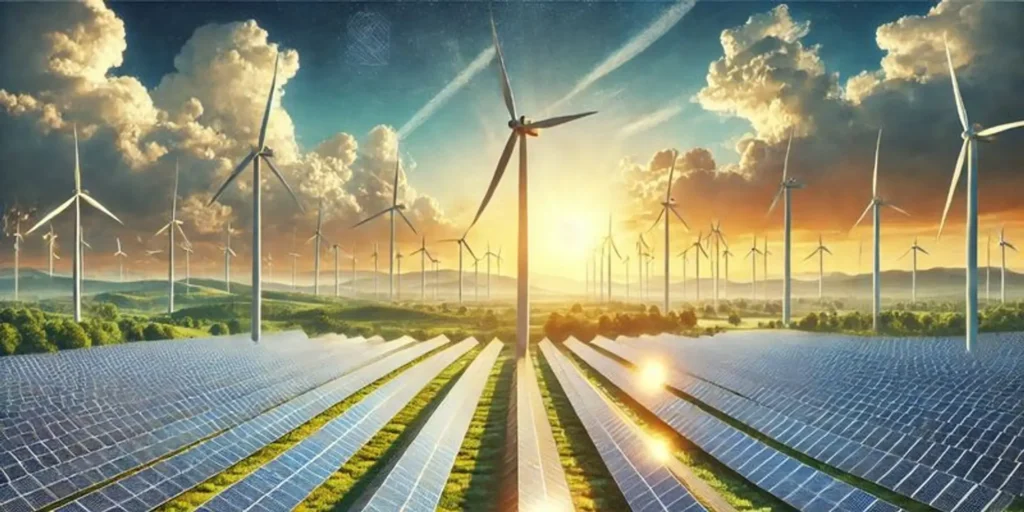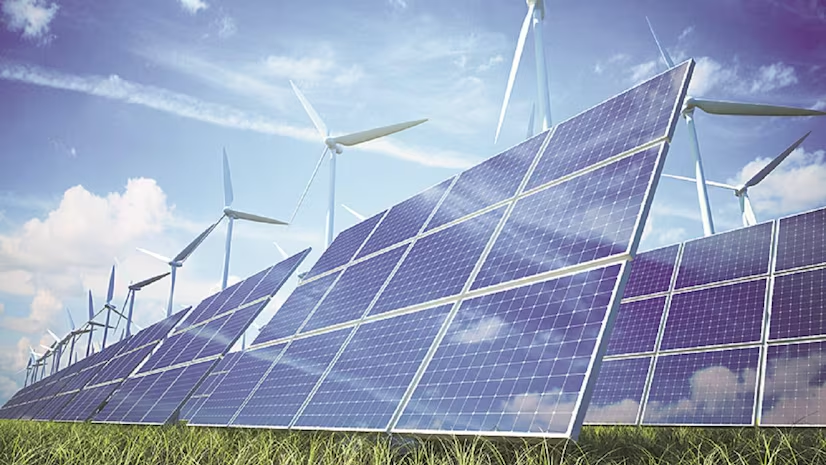India’s Green Surge is undergoing a revolutionary transformation in its energy sector, with renewable sources taking center stage in the nation’s energy strategy. This dramatic shift represents not just a temporary trend but a long-term commitment to sustainable development and environmental preservation. The growth of solar and wind energy in particular highlights the country’s determination to make a meaningful impact on both its future and the global fight against climate change.
A Nation Embraces Sustainability
India’s renewable energy sector has been growing at an unprecedented rate, with the government laying down ambitious plans to harness the full potential of clean energy sources. The adoption of renewable energy is no longer a distant dream; it is an integral part of the national energy framework. Through a combination of strong government policy, international partnerships, and growing public awareness, India is quickly establishing itself as a global leader in the renewable energy sector.
By the end of 2024, India aims to increase its renewable energy capacity to 500 gigawatts, which would make up half of the country’s total energy needs. This ambitious target is not only essential for reducing the country’s carbon footprint but is also seen as crucial in meeting the energy demands of its growing population. As the world moves towards decarbonization, India’s proactive approach to renewable energy is drawing attention from other nations and global investors.
Solar Power: Harnessing the Sun’s Potential
Solar energy is at the forefront of India’s renewable energy revolution. The country’s geographical advantage, with abundant sunshine throughout much of the year, makes it an ideal candidate for large-scale solar power generation. The government’s National Solar Mission has set a clear path towards increasing solar energy capacity, targeting 100 gigawatts of installed solar capacity by 2030.
To achieve this goal, India has already established several large-scale solar parks, such as the Bhadla Solar Park in Rajasthan, which is among the world’s largest. These solar installations not only contribute significantly to reducing carbon emissions but also provide economic benefits by creating jobs and improving local infrastructure. As more rural areas gain access to affordable, clean energy, the ripple effect spreads, leading to economic growth and increased energy access for millions.

Wind Energy: Tapping into Nature’s Power
Wind power, like solar energy, has also become an integral part of India’s renewable energy mix. With a vast coastline and favorable wind conditions, India is well-positioned to capitalize on wind energy. The southern and western states, in particular, have seen rapid growth in the installation of wind turbines, creating significant energy output.
The government’s support for wind energy development has been crucial in making wind power a viable and attractive investment opportunity. India is ranked among the top five countries globally for wind power capacity, and it continues to expand its wind farms in both onshore and offshore locations. Wind energy, when coupled with solar power, offers a versatile and sustainable energy mix that ensures India’s future energy security.
Government Policies: Catalysts for Change
The Indian government has been proactive in supporting the renewable energy transition through a series of forward-thinking policies. Key initiatives such as the Renewable Energy Development Agency (REDA) and state-level policies that offer financial incentives, land access, and tax breaks have made it easier for developers to launch and sustain renewable energy projects. These policy frameworks are instrumental in building investor confidence and fostering a conducive environment for the rapid growth of renewables.
Furthermore, the government’s focus on making green energy accessible to rural populations through decentralized energy solutions has expanded the reach of renewable energy to areas that previously lacked reliable power. The push for green energy is not limited to urban centers but extends to remote and underserved regions, ensuring that India’s renewable energy success is inclusive.
Technological Innovations: The Backbone of Progress
Technological innovation has played a crucial role in advancing India’s renewable energy agenda. The development of more efficient solar panels, cutting-edge wind turbine technology, and improvements in energy storage systems have all contributed to making renewable energy more viable and cost-effective.
Energy storage technology, in particular, has addressed one of the major concerns with renewable energy: intermittency. By storing excess energy generated during the day or during high-wind periods, energy storage systems ensure a steady power supply even when solar or wind generation slows. The integration of smart grids and advanced metering systems has also made it easier to manage renewable energy and ensure its smooth integration into the national grid.
India’s investment in research and development for clean energy technologies is expected to pay dividends in the coming years, driving down the costs of renewable energy while improving efficiency and reliability.
Economic Impacts: Growth and Employment
The renewable energy sector is also providing a significant boost to India’s economy. The expansion of solar and wind energy projects has created thousands of jobs in installation, maintenance, manufacturing, and research. These opportunities are not limited to urban areas; rural regions are benefitting from the creation of new industries and the development of local supply chains.
In addition to employment generation, renewable energy projects are driving local economic development through infrastructure improvements, including roads, electricity access, and community centers. The growing green economy is providing a much-needed stimulus to regions that have long struggled with economic inequality, offering them a chance to thrive in the new energy landscape.
Environmental Benefits: A Cleaner Future
India’s transition to renewable energy is already yielding significant environmental benefits. The reduction in greenhouse gas emissions from decreased reliance on coal and other fossil fuels is one of the most obvious outcomes. Additionally, India’s move towards wind and solar power has reduced air pollution, which has been a major issue in several urban centers.
The shift towards cleaner energy sources also plays a pivotal role in preserving India’s rich natural resources, including forests, rivers, and biodiversity. As the country embraces sustainability, it is setting an example for other developing nations on how to balance economic growth with environmental protection.
Challenges and Opportunities Ahead
While India’s renewable energy progress is promising, several challenges remain. Land acquisition for renewable energy projects, grid infrastructure limitations, and financing hurdles can slow down the pace of expansion. However, these challenges also present opportunities for innovation, especially in terms of policy reform and new financing mechanisms that encourage private-sector participation.
Public-private partnerships and greater collaboration between government bodies, businesses, and communities will be essential in overcoming these barriers. As India continues its renewable energy journey, finding solutions to these challenges will be key to maintaining momentum.
Conclusion: A Sustainable Future Beckons
India’s renewable energy surge is not just a technological or economic transformation; it is a movement towards a more sustainable, equitable, and resilient future. With continued investments in infrastructure, research, and policy innovation, India is well-positioned to meet its ambitious clean energy targets. As the world looks to transition to greener energy, India’s example serves as a powerful reminder of what is possible when commitment, collaboration, and innovation come together for the greater good.
The green surge in India marks the beginning of a new chapter for the nation—one where the promise of clean, affordable, and sustainable energy is realized, benefiting generations to come.
Homebound: Kerala Man Returns After 42 Years Stranded in Bahrain



